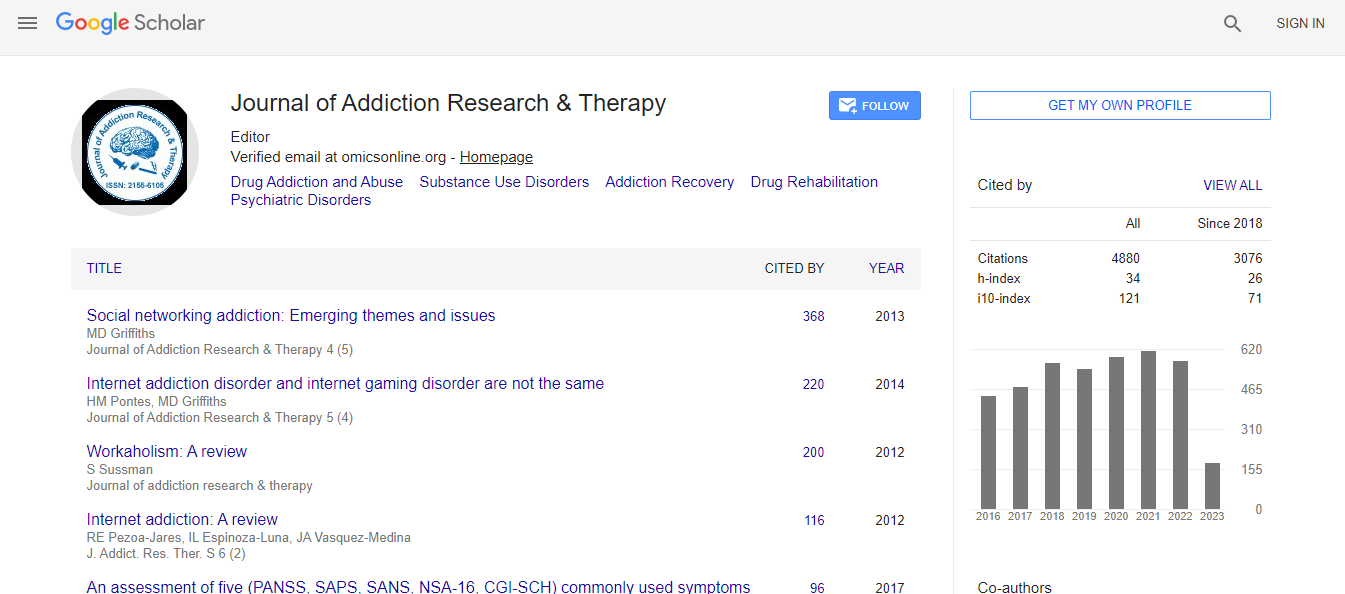Review Article
A Review of Magnetic Resonance Spectroscopy Studies in Marijuana using Adolescents and Adults
Jennifer T Sneider1,3*, Yasmin Mashhoon2,3 and Marisa M Silveri1,31Neurodevelopmental Laboratory on Addictions and Mental Health, McLean Imaging Center, McLean Hospital, Belmont, MA, USA
2Behavioral Psychopharmacology Research Laboratory, McLean Imaging Center, McLean Hospital, Belmont, MA USA
3Department of Psychiatry, Harvard Medical School, Boston, MA, USA
- *Corresponding Author:
- Jennifer Tropp Sneider
McLean Hospital/Harvard Medical School
McLean Imaging Center, 115 Mill Street
Mail Stop 204, Belmont, MA 02478
Tel: 617.855.3633
Fax: 617 855 2770
E-mail: jtsneider@mclean.harvard.edu
Received March 19, 2013; Accepted April 17, 2013; Published April 24, 2013
Citation: Sneider JT, Mashhoon Y, Silveri MM (2013) A Review of Magnetic Resonance Spectroscopy Studies in Marijuana using Adolescents and Adults. J Addict Res Ther S4: 010. doi:10.4172/2155-6105.S4-010
Copyright: © 2013 Sneider JT, et al. This is an open-access article distributed under the terms of the Creative Commons Attribution License, which permits unrestricted use, distribution, and reproduction in any medium, provided the original author and source are credited.
Abstract
Marijuana (MJ) remains the most widely used illicit drug of abuse, and accordingly, is associated with adverse effects on mental and physical health, and neurocognitive decline. Studies investigating the neurobiology of underlying MJ effects have demonstrated structural and functional alterations in brain areas that contain moderate to high concentrations of cannabinoid (CB1) receptors and that are implicated in MJ-related cognitive decrements. Proton magnetic resonance spectroscopy (1H MRS), a non-invasive imaging technique used to assess neurochemistry, has been widely applied to probe a variety of substance-abusing populations. To date, however, there is a relative paucity of MRS published studies characterizing changes in neurometabolite concentrations in MJ users. Thus, the current review provides a summary of data from the eight existing MRS studies of MJ use in adolescents and adults, as well as interpretations and implications of study findings. Future MRS studies that address additional factors such as sex differences, onset and duration of use, abstinence and age, are warranted, and would lead to a more thorough characterization of potential neurochemical correlates of chronic MJ use, which would fill critical gaps in the existing literature.

 Spanish
Spanish  Chinese
Chinese  Russian
Russian  German
German  French
French  Japanese
Japanese  Portuguese
Portuguese  Hindi
Hindi 
